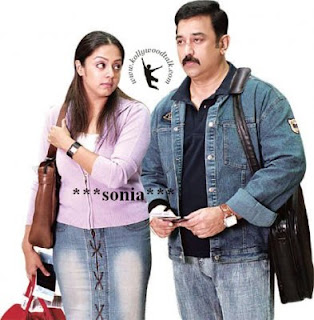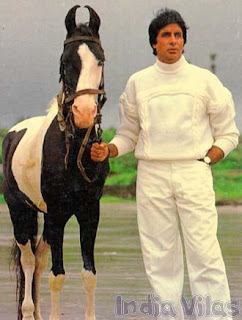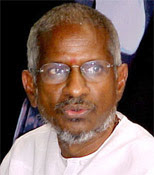The Telugu film industry, that was rocking for last so many years is now seems to face music. The Tollywood seems to have been entangled in the time wrap of its own heydays. This biggest industry of Andhra Pradesh has been facing hard days for some time now and going by its present performance, it will be futile to hope that Telugu films prove to be a treat for our eyes in the year 2007.
There are a number of films slated for release in coming months and they are worth Rs. 100 crores. There have been many upsets in the second half of the 2006, which include Chiranjeevi, Nagarjuna starrers. These films have benn marred by the same storylines, inimaginative presentations. One senses as if the makers and performers of these flicks were taking audiences for a ride. This nullity or void on the part of makers has been aptly translated on the Box Office collections with only a handful of films making it in the hits category.
Traditionally Christmas time is considered as auspicious for the film releases as Diwali and in case of Telugu films, that period extends upto Sankranthi. Accordingly, this year from the December 14th, several films will try their luck. NTR Junior's ‘Rakhi’ has been released and it has been received well, if one goes by the initial reviews. Pawan Kalyan has been serching for a hit for last few years and he is throwing his hat with `Annavaram', joining them will be Allu Arjun's `Desamudhuru', Prabhas' `Yogi' which is a remake of Kananda blockbuster ‘Jogi’. Some reports cliam that ‘Yogi’ is to be dubbed in Hindi and one satellite channel has bought rights for the same. Also testing waters will be Balakrishna's `Maharadhi' whose release has been curiously postponed a couple of times now.
These films were bought for staggering prices, all put together are about Rs. 90 crores to Rs. 100 crores. But, given the penchant of formulas and clichés in Telugu films, it is feared that half of these films might bomb miserably unless they have something substantial to offer to the discerning viewers. Already distributors have burned their fingers with Chiranjeevi's `Stalin', Nagarjuna's `Boss' and Mahesh Babu's `Sainikudu', all of which failed to reach the expectations of viewers, though they have garnered good openings. On the other hand, it was the small budget films that made waves bringing happiness to distributors and viewers. Sunil's `Andala Ramudu' is said to have collected four times the investment. Jagapathi Babu's `Samanyudu', which started on a low key, has picked up considerably given its good content.
Says a report in the newspaper ‘Hindu’:
There are a number of films slated for release in coming months and they are worth Rs. 100 crores. There have been many upsets in the second half of the 2006, which include Chiranjeevi, Nagarjuna starrers. These films have benn marred by the same storylines, inimaginative presentations. One senses as if the makers and performers of these flicks were taking audiences for a ride. This nullity or void on the part of makers has been aptly translated on the Box Office collections with only a handful of films making it in the hits category.
Traditionally Christmas time is considered as auspicious for the film releases as Diwali and in case of Telugu films, that period extends upto Sankranthi. Accordingly, this year from the December 14th, several films will try their luck. NTR Junior's ‘Rakhi’ has been released and it has been received well, if one goes by the initial reviews. Pawan Kalyan has been serching for a hit for last few years and he is throwing his hat with `Annavaram', joining them will be Allu Arjun's `Desamudhuru', Prabhas' `Yogi' which is a remake of Kananda blockbuster ‘Jogi’. Some reports cliam that ‘Yogi’ is to be dubbed in Hindi and one satellite channel has bought rights for the same. Also testing waters will be Balakrishna's `Maharadhi' whose release has been curiously postponed a couple of times now.
These films were bought for staggering prices, all put together are about Rs. 90 crores to Rs. 100 crores. But, given the penchant of formulas and clichés in Telugu films, it is feared that half of these films might bomb miserably unless they have something substantial to offer to the discerning viewers. Already distributors have burned their fingers with Chiranjeevi's `Stalin', Nagarjuna's `Boss' and Mahesh Babu's `Sainikudu', all of which failed to reach the expectations of viewers, though they have garnered good openings. On the other hand, it was the small budget films that made waves bringing happiness to distributors and viewers. Sunil's `Andala Ramudu' is said to have collected four times the investment. Jagapathi Babu's `Samanyudu', which started on a low key, has picked up considerably given its good content.
Says a report in the newspaper ‘Hindu’:
In the year 2006, only a handful of Telugu films hit the bull's eye and about hundred films bit the dust. Mahesh Babu's `Pokiri', Nagarjuna's `Sri Ramadasu', Siddharth's `Bommarillu', Sunil's `Andala Ramudu' and Venkatesh's `Lakshmi' were the only genuine hits this year while several big heroes, including Chiranjeevi and Balakrishna, were down in the dumps.
The biggest duds that incurred huge losses shattering all expectations include Pawan Kalyan's `Bangaram', Balakrishna's `Veerabhadra', NTR Junior's `Ashok', Nagarjuna's `Boss', Chiranjeevi's `Stalin', and Mahesh Babu's `Sainikudu'. Raviteja's `Khatarnak', Prabhas's `Pournami' that halted the juggernaut of producer M.S. Raju, Siddharth's `Chukkallo Chandrudu' were also on the flop list.
To make the matters worse, dubbed films from Kollywood and Hollywood rubbed salt on Telugu films’ wounds when they made a more money than these films. That prompted Telugu films producer’s association to take a drastic step. They decided to impose a ban on the dubbed Tamil films. This move also drew flank from some quarters, since it is many small producers, who use to dub and release the films. Many producers even went ahead as to question the rational behind this move and their argument was unambiguous: if big budget films can be remade and if they can have non-Telugu speaking artists, why can’t we have dubbed films in the first place.
While this year might end with a low note for Telugu films, in stark contrast stands the Tamil movie industry. Kollywood witnessed heightened activity and zeal this year, with many films turning out be profitable ventures. Especially pleasing thing for the industry is that many newcomers and dark horses proved to be winner. Kamal Haasan starrer 'Vettayadu Vilaiyadu' was the first success of the year. This film is still going strong in many parts of Tamil Nadu. On many centers, it has already completed 100 days. It is considered to be a blockbuster.Director K.S. Ravikumar, who had in past delivered hits like Muthu and Padayappa, give yet another hit film with ‘Varlaaru.’ This film initially was delayed much, so much so that nobody thought it would be released at all. But it was release d and is running successfully. Its success might be gauged from the fact that after the packed houses run of the films in first few weeks, Superstar Rajnikanth called Ajith, the hero of the film and his wife Shalini on dinner and heaped praises on him. The film is now reckoned as the second coming of Ajith. Varlaaru got such a opening that it is considered to be the best opening a non-Rajini starrer can get.
d and is running successfully. Its success might be gauged from the fact that after the packed houses run of the films in first few weeks, Superstar Rajnikanth called Ajith, the hero of the film and his wife Shalini on dinner and heaped praises on him. The film is now reckoned as the second coming of Ajith. Varlaaru got such a opening that it is considered to be the best opening a non-Rajini starrer can get.
One such film which kept cash registers ticking was ‘Imsai Arsan 23rd Pulikesi’. Though the film has comedian Vadivelu in the lead role, it enjoyed a good run at the box office. Besides these there are many films like Thimiru, Em magan and now Rendu, which were profitable and had an envious stint on the box office. That made the producers from AP to dub them in Telugu and various other films from Kollywood found themselves to be remade in Kannada. The reason for the success of these films, as I se it, is that they had some original storylines, some out of box presentation and above all, these movies brimmed with novelties. Indeed in the first half of the year, Tamil movie marked was flooded with underworld flick with the successive successes of Thalainagaram, Kokki and other movies. But fortunately enough the trend was averted in time and now industry is reaping bonuses. It is high time Tollywood take a leaf out of Kollywood and enjoy the gains that it truly deserve.
 d and is running successfully. Its success might be gauged from the fact that after the packed houses run of the films in first few weeks, Superstar Rajnikanth called Ajith, the hero of the film and his wife Shalini on dinner and heaped praises on him. The film is now reckoned as the second coming of Ajith. Varlaaru got such a opening that it is considered to be the best opening a non-Rajini starrer can get.
d and is running successfully. Its success might be gauged from the fact that after the packed houses run of the films in first few weeks, Superstar Rajnikanth called Ajith, the hero of the film and his wife Shalini on dinner and heaped praises on him. The film is now reckoned as the second coming of Ajith. Varlaaru got such a opening that it is considered to be the best opening a non-Rajini starrer can get.One such film which kept cash registers ticking was ‘Imsai Arsan 23rd Pulikesi’. Though the film has comedian Vadivelu in the lead role, it enjoyed a good run at the box office. Besides these there are many films like Thimiru, Em magan and now Rendu, which were profitable and had an envious stint on the box office. That made the producers from AP to dub them in Telugu and various other films from Kollywood found themselves to be remade in Kannada. The reason for the success of these films, as I se it, is that they had some original storylines, some out of box presentation and above all, these movies brimmed with novelties. Indeed in the first half of the year, Tamil movie marked was flooded with underworld flick with the successive successes of Thalainagaram, Kokki and other movies. But fortunately enough the trend was averted in time and now industry is reaping bonuses. It is high time Tollywood take a leaf out of Kollywood and enjoy the gains that it truly deserve.




















